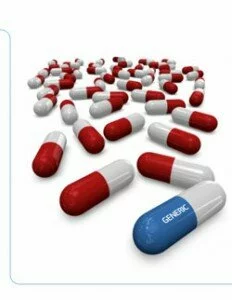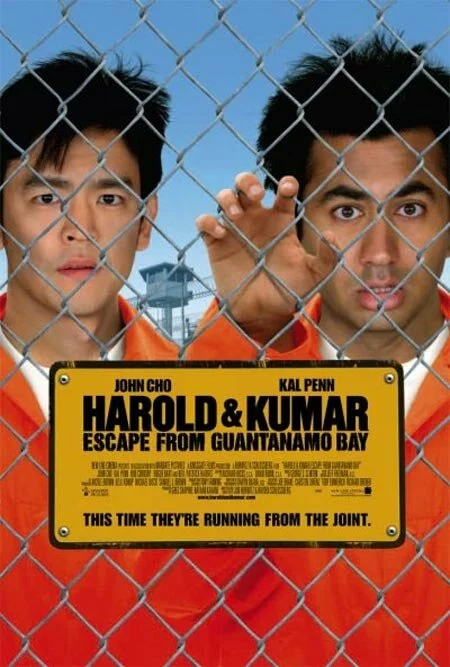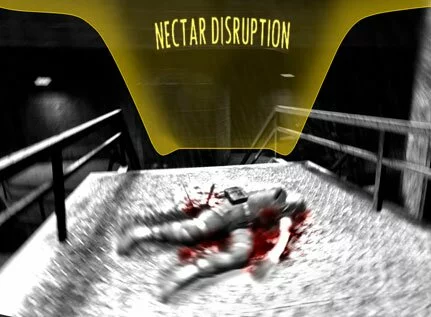- Canada Pimps Its Girls to Big Pharma (henrymakow.com)
- 14 Ways To Save On Drugs Big Pharma Doesn’t Want You To Know (The Consumerist)
- Pfizer takes 100,000 square feet in Mission Bay (San Francisco Tenant Representation)
- Big Pharma’s Money And Political Clout Gutted The FDA (Novus)
Subscribe to the eDrugSearch Blog with Bloglines:

 I found it odd to stumble upon what is apparently a running column in the Lakeland (FL) Ledger called “Bartender Spotlight.” That’s right — it’s a series of profiles of local bartenders.
I found it odd to stumble upon what is apparently a running column in the Lakeland (FL) Ledger called “Bartender Spotlight.” That’s right — it’s a series of profiles of local bartenders.
I also found it interesting that the bartender the Ledger profiled on Thursday was 21-year-old Ashley Von Heal from “Hooters at 3400 US 98 North.”
What I found highly predictable, however, is what Ashley wants to do for a living. Here’s the relevant excerpt:
A marketing and sales major, she’d eventually like to become a pharmaceutical sales rep. Why pharmaceutical sales?
“I can make pretty good money, plus I want to be able to travel while I’m still young.”
Look, we’ll say it again — we have absolutely nothing against attractive young women like Ashley. But as long as the pharma cheerleader trend continues unabated, we feel the need to point these things out.
- Globalized generics plague Big Pharma (Fierce Pharma)
- FDA, Big Pharma Way Behind On Promised Postmarket Safety Studies (Novus)
- Big Pharma spent $3.6 Mil in lobbying the Federal Government.. (The Sirens Chronicles)
- Big Pharma’s Big Slump (The Wall Street Journal)
Subscribe to the eDrugSearch Blog with Bloglines:

 In the United States, we’re trained virtually from birth to value brand names — in fact, often to overvalue them.
In the United States, we’re trained virtually from birth to value brand names — in fact, often to overvalue them.
Did you know, for example, that when large corporations buy one another, they often have to pay millions — or even billions — of dollars for something accountants call “intangible assets”? One of these assets — called “goodwill” — can be thought of as the value of the brand. It reflects the profits a company makes over and above what you’d expect from the tangible assets alone, simply because of its reputation.
Big pharmaceutical companies want you to buy into the value of brands when purchasing prescription medications — so you’ll pay more for them. That’s one of the reasons they spend so much on advertising.
The problem for Big Pharma, however, is that once a brand-name drug’s patent runs out, the value of the brand name (logically at least) is nil.
What would the value of Coca-Cola’s brand be if everyone were allowed to make soft drinks using Coke’s formula? How about if KFC had to share Colonel Sanders’ secret recipe? It would diminish quite a bit, wouldn’t it?
In the pharmaceutical business, once a drug’s patent runs out, the FDA (or equivalent regulatory bodies in Canada and elsewhere) basically allows the secret recipe for the drug to be given to other qualified drug makers, who create generic versions of the drug. Because the generic drug makers don’t spend billions of dollars on marketing, research and development, they can charge significantly less for the drug than the original drug manufacturer.
At that point, it just doesn’t make sense to buy the brand name version of the drug. It’s like paying for the designer label on your shirt rather than the shirt itself. And is ANYONE really impressed by the fact that you use brand-name drugs? (I didn’t think so.)
Two informative news reports over the past few days, one from KING5 in Seattle/Tacoma (looking at over-the-counter meds) and another from a pharmacist writing for an Ohio newspaper (focusing on prescription drugs), look into the difference between brand and generic drugs and come to the same conclusion: the only difference is the price.
This is obviously why large pharmaceutical companies are now lobbying state legislatures to make it more difficult to substitute generic drugs for brand drugs when your doctor writes the name of the brand drug on your prescription. From Delmarva Now:
Pharmacists are usually authorized to automatically substitute generics for brand-name drugs — unless specifically instructed not to do so. Major drugmakers are fighting back by lobbying state legislatures to make it more difficult to make substitutions, seeking to require direct communication between doctor and pharmacist before making each switch. Maryland’s General Assembly considered two such bills during the 2008 legislative session and will likely see similar proposals in 2009.
While doctors may have legitimate reasons to prefer a brand-name drug, they also have the option to make that specification on a prescription. There is no need for a phone call to a busy doctor every time a prescription is filled.
This lobbying is an attempt to protect pharmaceutical profits by making it more difficult to purchase generic drugs. Since many insurance plans will not pay for a brand-name drug once the generic is available, this could end up costing patients a lot more –or forcing them to forego a medication altogether.
So don’t be fearful of generic drugs — and fight for your right to buy them if you need to. They’re not inferior to brand-name drugs; they just cost less.
With the release of the much-anticipated game Haze for Playstation 3, know-it-all commentators have a new, ready-made scapegoat for the upsurge in teens taking prescription drugs illegally. That’s right — now they can blame video games!
Specifically, they can blame Haze, the plot of which is described as follows:
The game revolves around Mantel Global Industries, a multinational corporation with bio-medical expertise. This has led to the development of Nova-Keto-Thyrazine – also called Nectar … a performance-enhancing pharmaceutical drug that grants the user enhanced speed, accuracy and strength.
Mantel uses this drug to control the minds of its soldiers. When administered, Nectar can control–among other things– what a soldier sees, similar to the effects of a hallucinogenic drug. It makes enemies stand out as bright orange silhouettes against the darker-gray background. Nectar also drowns out the surrounding images of death and destruction (for instance, bodies will vanish.) Nectar also reduces recoil, and allows the player to zoom in further while scoped.
An overdose of Nectar is dangerous, with loss of mental control and death being possible side-effects. A Mantel Soldier experiencing an overdose is shown by a change in their armor, changing in color from yellow to red.
Rebel soldiers may go in to a “Play Dead” state just before they are killed, allowing them to regenerate health and disappear from the Mantel soldiers’ sight, since they can’t see dead people while on Nectar. In addition, they have been given the capability to exploit Mantel’s dependence on Nectar by attacking the Nectar injector, extracting Nectar to use on throwing knives from dead Mantel troopers and using the injector to create Nectar grenades. These Nectar-enhanced weapons will cause a Mantel trooper to overdose on Nectar, as will attacking the Nectar injector.
Insert your own commentary here. I won’t bother. But I will say that video games, as usual, aren’t the real cause of the problem of teens and pharmaceutical abuse, any more than the Internet itself is.
Retired physician John R. Agnew has an amusing take on Big Pharma’s bombardment of consumers with DTC advertising. Writes Agnew:
The drug commercials seem to me to be insulting. They overstate the benefits, minimize the side effects and ignore the cost: “Panacea is not for everyone,” they warn. “Let your doctor know if you have liver disease (he is too dumb to figure it out for himself) or are allergic to this drug (which you wouldn’t know in advance anyway). Side effects include fainting, jaundice, suicidal thoughts, constipation and sudden death. Do not operate heavy machinery after taking the first dose, and tell your doctor right away if you are dying”…
My favorite is Reclast, a once-a-year treatment for osteoporosis. It comes with many warnings, of course, including “jaw problems have been reported.” Jaw problems? What does that mean? Lock-jaw? Fossy-jaw? (I looked it up, and you don’t want to know while eating breakfast).
Reclast, like Fosamax and Boniva, is a treatment for osteoporosis, which refers to an extreme loss of bone density, most common in postmenopausal women. All three drugs are known as bisphosphonates.
The difference is that Reclast offers a level of convenience that the others don’t. Reclast is the first drug approved by the FDA (in 2007) as a once-a-year, intravenous treatment. As Novartis states on the Reclast Web site:
A single dose, along with daily calcium and vitamin D, helps strengthen your bones and protect them from fracture for 12 full months.
Reclast, along with Fosamax, Boniva and other bone-building drugs, have a number of side effects — but currently the FDA is most concerned about studies that show these drugs can produce irregular heartbeats in some patients. The most recent study, focusing on Fosamax, came out just last month.
Reclast’s jaw side effect, by the way, is osteonecrosis (“bone death”) of the jaw bone; it has occurred only in rare cases. Here’s a full list of Reclast warnings and precautions.
 I keep hoping it will go away (after all, it’s been around for over a year), but I can’t seem to escape that two-minute-plus Celebrex ad with a bunch of freaky faceless people bicycling, drinking tea, painting fences, reading the newspaper, swimming with the fishes, dancing under the stars, and playing frisbee with the dog in slow motion. I guess I must be watching channels for the arthritis demo, like AMC, a little too often.
I keep hoping it will go away (after all, it’s been around for over a year), but I can’t seem to escape that two-minute-plus Celebrex ad with a bunch of freaky faceless people bicycling, drinking tea, painting fences, reading the newspaper, swimming with the fishes, dancing under the stars, and playing frisbee with the dog in slow motion. I guess I must be watching channels for the arthritis demo, like AMC, a little too often.
With the slo-mo and totally weird vibe of the ad, I’ve been thinking of pulling the ad into my video editing software and laying on a new soundtrack that would be more appropriate to the visuals. Here are my candidates:
1. Lucy in the Sky with Diamonds
2. Comfortably Numb
3. Stairway to Heaven
4. Hotel California
5. Bohemian Rhapsody (the length is about the same…)
6. Don’t Worry Be Happy (should be the theme song for all DTC ads)
I’m leaning toward Lucy at this point — if I ever get around to doing it. In the meantime, here’s a version of the Celebrex ad with a more ominous vibe.
As you know, we like to post links to parodies of pharmaceutical commercials. Rather than publish these individually, though, I thought I’d provide all these links in a single roundup post. Here are some popular parodies of current drug ads — one for each drug. (Be warned that some of them are a little off-color.) Enjoy!
- Zoloft
- Viagra
- Cialis
- Mirapex (restless leg syndrome)
- Lipitor
- Valtrex
This drug parody ad makes an interesting point. Ads with a tagline of “Your secret is safe with Valtrex” actually might be a more effective way for GlaxoSmithKline to market the drug, considering how many herpes sufferers are reticent to share their condition with their partners. The ads could be done by the same agency that does the “What Happens in Vegas Stays in Vegas” ads.
It would be morally and ethically WRONG, of course — but we are talking about Big Pharma here.
It would at least be more true to life than the current overly-earnest approach — always featuring both partners smiling and talking pleasantly to the camera. A good shouting match might be more appropriate.
People really seem to like making fake Valtrex commercials, by the way. Check ‘em out.
We’ve gotten thousands of first-time visitors since we launched the eDrugSearch.com Community in late February. So I’ve decided, every once and a while, to post some basic information to help explain why we do what we do here, and why we’re so proud of our role in helping American consumers save money on prescription drugs by purchasing from licensed Canadian and international pharmacies.
This is part of a lecture by Dr. Marcia Angell, the first woman to serve as editor-in-chief of the New England Journal of Medicine, and now a lecturer at Harvard. She explains why drug prices are so high for U.S. consumers; namely, that pharmaceutical companies spend too much on marketing and on creating “me too” drugs to extend their patents — while producing no real innovation.
I hope you find it educational.
-
-
Search Blog Posts
-
Save Even More Money!
-

-
Trending Content
-
Watch our YouTube Video
-
Categories
Big Pharma Buy prescriptions online Canadian drugs Drug costs Drug reimportation Drug safety eDrugSearch.com FDA Health 2.0 Healthcare100 Healthcare blogs Healthcare solutions Low-cost drugs Medicare Part D Merck Online pharmacies Online pharmacy safety Pfizer Pharma bloggers Pharmaceutical companies Pharmaceutical marketing Pharma cheerleaders Prescription drug abuse Prescription drug prices Prescription drugs Prescriptions Wal-Mart drug plan -
Blogroll
- Bullet Wisdom
- Bulverde Business Directory
- Christian Counseling San Antonio Tx.
- Christian Schools in San Antonio Texas
- Christian Social Network
- Christians United for Israel
- DrugWonks.com
- Eye on FDA
- GoozNews
- Health 2.0
- Hunting Forum
- In the Pipeline
- Jesus Christ Our King
- John Hagee Ministries
- Kevin, M.D.
- Local Search Marketing
- My $299 Website
- Pharm Aid
- Pharma Marketing
- PharmaGossip
- Pharmalot
- San Antonio Asphalt
- San Antonio Life Insurance
- San Antonio Pressure Washing
- Storage New Braunfels Tx
- Texas Wildlife Supply
- The Angry Pharmacist
- The Health Care Blog
- The Peter Rost Blog
- World Vision
-
Tags
big pharma Canadian drugs canadian pharmacies canadian pharmacy consumer reports craig newmark divine healing Drug costs drug prices Drug reimportation eDrugSearch.com FDA Fosamax Generic drugs healing scriptures Health 2.0 healthcare reform Hypertension Jehova Rophe Jesus Christ Lipitor Metformin miracles nabp online pharmacy dictionary online prescriptions osteoporosis peter rost Pharmacies pharmacists pharmacychecker pharmacy spam phrma Prescription drugs prescription medication Proverbs 3:5-8 reimportation relenza Roche saving money SSRI swine flu Tamiflu The Great Physician The Lord our Healer -
Recent Tweets
- eDrugSearch Blog Rank on the Healthcare100: http://t.co/VJprL4LZWl [#]
- New blog posting, How to Get Prescription Medication Without Health Insurance - http://t.co/1ZdLavB87d [#]
- 10 Tips for Safer Prescription Drug Use http://t.co/GFnMIN1mCy [#]
- New blog posting, How to Beat High Drug Prices By Comparing Low Cost Pharmacies - http://t.co/fsZ0stNZme [#]
-
Archives
-
Recent Comments
- Heather Sturges on What is the Difference Between Effexor and Cymbalta?
- Lupe Machol on Cost of diabetes drugs has nearly doubled
- Manpower For Hospital In Pune on Why is Medicine Cheaper in Canada?
- Jen on How a Canadian Pharmacy Can Help You Offset Drug Price Hikes
- nino iarajuli on Vending machine dispenses prescription drugs
